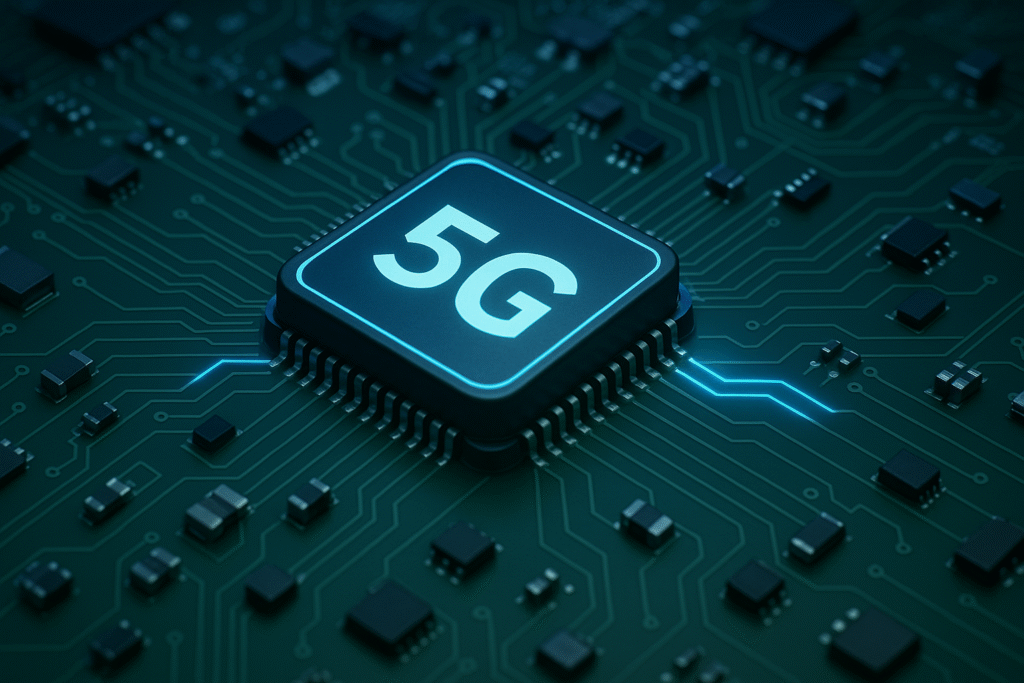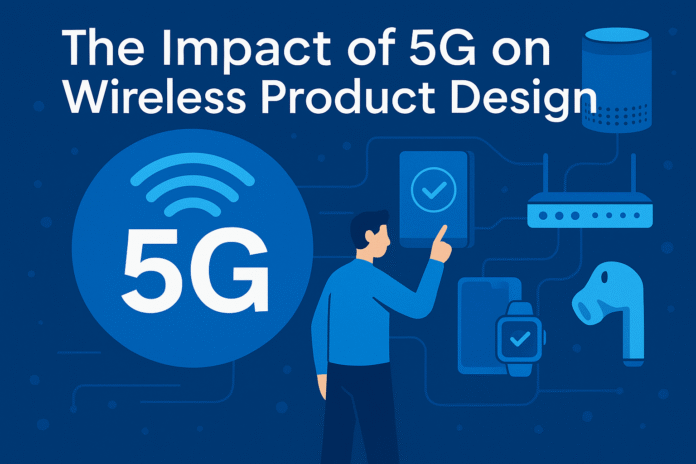The fifth generation of mobile networks—5G—is radically reshaping the wireless landscape. With ultra-low latency, enhanced bandwidth, and higher frequencies, 5G is not just another iteration of mobile connectivity. It sets the stage for entirely new categories of wireless products, especially in areas such as autonomous systems, smart cities, industrial IoT, and augmented reality. This evolution places new demands on hardware engineers, embedded developers, and radio frequency (RF) specialists, making pcb design a critical element of 5G-enabled product development.
Designing for 5G requires a shift in thinking. It introduces challenges in antenna layout, thermal management, signal integrity, and component selection that didn’t exist in previous generations. From the smallest consumer gadgets to industrial automation systems, 5G is altering how wireless products are conceived and built.
Challenges of Designing Wireless Products with 5G
With greater capabilities come greater engineering hurdles. The following challenges define the shift toward 5G-centric wireless product design:
1. High-Frequency Signal Propagation
5G operates across a wide spectrum range, from sub-6 GHz to millimeter wave (mmWave) bands exceeding 24 GHz. These higher frequencies provide massive bandwidth but are highly susceptible to attenuation, diffraction, and absorption. Designers must compensate for shorter range and increased signal loss, often requiring more antennas, careful orientation, and advanced materials.
2. Antenna Integration and Placement
The integration of multiple-input, multiple-output (MIMO) and beamforming antennas significantly increases the design complexity. At higher frequencies, even small layout inaccuracies can cause mismatches and reflection. Careful electromagnetic simulation and PCB stack-up configuration are needed to avoid interference and maintain efficiency.
3. Thermal Management
5G chips operate at high clock speeds and support more radios per unit. This increased power density generates substantial heat, especially in compact consumer devices. Without effective thermal dissipation, performance degrades and device lifespan shortens. Heat spreaders, dedicated thermal vias, and strategic component placement must be used effectively.
4. RF Front-End Complexity
5G devices often need to operate across multiple bands, requiring a highly linear and selective RF front-end. Filters, low-noise amplifiers (LNAs), power amplifiers (PAs), and RF switches need to be selected and tuned carefully. These components also impact size, power consumption, and regulatory compliance.
5. EMI and Coexistence with Other Wireless Standards
Modern devices support multiple wireless protocols—Wi-Fi, Bluetooth, GPS, and cellular. With 5G added to the mix, electromagnetic interference (EMI) becomes a serious issue. Shielding, grounding, and isolation techniques must be carefully implemented in the PCB layout to prevent intermodulation and spurious emissions.

Impact of 5G on Wireless Product Design
The transformative nature of 5G is reflected in nearly every part of wireless product development:
1. Miniaturization with Performance
5G enables real-time, high-bandwidth data processing, pushing product designers to integrate more functionality into smaller form factors. Despite space constraints, these devices must maintain radio performance, reliability, and thermal safety—demanding innovative enclosure, antenna, and pcb design strategies.
2. Advanced Materials and Substrates
Standard FR-4 PCB materials are no longer sufficient for mmWave designs. High-performance substrates such as Rogers, Taconic, or Panasonic Megtron offer lower dielectric loss and better stability at higher frequencies. These materials affect cost and manufacturing complexity but are necessary for optimal RF behavior.
3. Use of AI in Wireless Systems
With the increased data rates and reduced latency of 5G, AI algorithms can now run in near real-time on wireless edge devices. Applications in predictive maintenance, health monitoring, and traffic management are expanding, requiring designers to consider onboard ML accelerators and fast data pipelines.
4. More Robust Mechanical Design
Because mmWave signals are more affected by environmental factors (e.g., water, walls, glass), product enclosures must be designed to avoid signal blockage. Transparent or low-permittivity materials may be used, especially for wearables and automotive products. Housing and casing play an active role in system performance.
5. Extended Product Lifecycles
5G devices are expected to support over-the-air firmware updates and remain compatible across multiple network generations. Designing for long-term support means including hardware hooks for future features and planning update paths through secure bootloaders and firmware partitions.
5G Technology in Wireless Devices
Understanding how 5G integrates into different classes of wireless products reveals the breadth of its influence:
1. Smartphones and Tablets
These flagship consumer devices showcase high-bandwidth streaming, VR gaming, and 4K video calls. With multiple 5G bands, four or more antennas, and AI image processing, these products are now platforms for computing, not just communication.
2. Industrial Sensors and Gateways
5G’s low-latency and high-reliability make it ideal for time-sensitive factory automation. Embedded gateways equipped with 5G modules and secure edge processing are replacing traditional wired networks, bringing flexibility and scalability.
3. Connected Vehicles
From car-to-car communication to real-time navigation and OTA updates, 5G supports the next level of intelligent transport systems. Vehicle-mounted modules require ruggedized PCBs, wide temperature operation, and automotive compliance.
4. Medical Devices
In applications like telehealth, remote surgery, or patient monitoring, 5G supports continuous, high-fidelity communication. These systems demand low-latency connectivity and certified data security, often in portable or wearable formats.
5. Consumer IoT Devices
Smart speakers, thermostats, security cameras, and appliances are increasingly 5G-enabled, enabling them to sync instantly with cloud systems and interact seamlessly with users. These products balance cost, size, and performance.
Design Considerations for 5G Products
Developing 5G-enabled products requires deliberate design decisions across several engineering disciplines:
Antenna Design
- Use directional antennas and beamforming for mmWave.
- Test antenna placement for isolation and efficiency.
- Avoid metallic or high-dielectric materials near radiating elements.
PCB Layout and Stack-Up
- Route RF lines with controlled impedance.
- Use differential pairs where applicable.
- Design with short, matched traces and minimal stubs.
- Add plenty of ground vias and shielding where EMI is likely.
Power Management
- Allocate power budgets for 5G transceivers and PAs.
- Use buck-boost regulators to maintain voltage levels during peak load.
- Include sleep and wake control for battery-operated devices.
Signal Integrity
- Minimize crosstalk and return loss with careful trace routing.
- Include terminations and filters for signal conditioning.
- Simulate layout using signal integrity software.
Security and Firmware
- Secure boot and OTA firmware updates.
- Embedded SIM (eSIM) or integrated authentication chips.
- Data encryption between device and cloud endpoints.
Effect of 5G on IoT Devices
The Internet of Things will experience exponential growth due to 5G. Here’s how the impact plays out in embedded, low-power, and massive device ecosystems:
1. Massive IoT Connectivity
5G supports up to a million devices per square kilometer. This capability opens the door for massive sensor networks in cities, agriculture, and logistics. Devices must use lightweight protocols like MQTT and run on minimal power.
2. Real-Time Operation
Time-sensitive applications—smart traffic lights, real-time video surveillance, or industrial robotics—benefit from sub-millisecond latency. This shift demands faster MCUs, optimized firmware, and edge analytics.
3. Extended Range via Network Slicing
With 5G network slicing, operators can dedicate bandwidth to specific applications or QoS needs. IoT devices can operate with guaranteed latency or throughput, enhancing reliability in mission-critical environments.
4. Cloud and Edge Balance
IoT devices are now being designed with smarter edge capabilities, reducing dependency on cloud roundtrips. The availability of 5G allows more efficient load balancing between local inference and centralized processing.
5. Longer Lifecycle and OTA Control
Firmware updates are easier and faster with 5G, improving device longevity. Devices can be updated with new AI models or features without being manually serviced.
Regulatory and Certification Requirements
With more radios and frequency bands, certification is more demanding:
- FCC, CE, and regional RF compliance.
- SAR testing for body-worn devices.
- Carrier-specific certification (e.g., Verizon Open Development).
- PTCRB and GCF for cellular interoperability.
Designers should consider certification from the earliest prototype phase to avoid late-stage redesigns.
Testing and Validation of 5G Devices
Testing is a key component of 5G product development. Key testing types include:
- Antenna and Over-the-Air (OTA) Testing: For gain, efficiency, and pattern evaluation.
- Thermal Profiling: Using infrared cameras and embedded thermistors.
- RF Performance Testing: Including intermodulation, spurious emissions, and power output.
- Network Interoperability: Testing across multiple bands, carriers, and environments.
Automated testing platforms and simulation tools reduce time-to-market while improving reliability.
Conclusion
5G is reshaping wireless product development. It enhances bandwidth, reduces latency, and enables massive connectivity—all of which demand new design approaches. Engineers must consider antenna strategy, thermal dissipation, RF front-end design, and secure communication early in the development cycle.
As IoT, mobile, medical, and automotive sectors adopt 5G, pcb design must evolve to support high-frequency routing, EMI shielding, and advanced materials. Successful wireless products of the future will balance performance with reliability, security, and efficiency across a wide spectrum of use cases.
